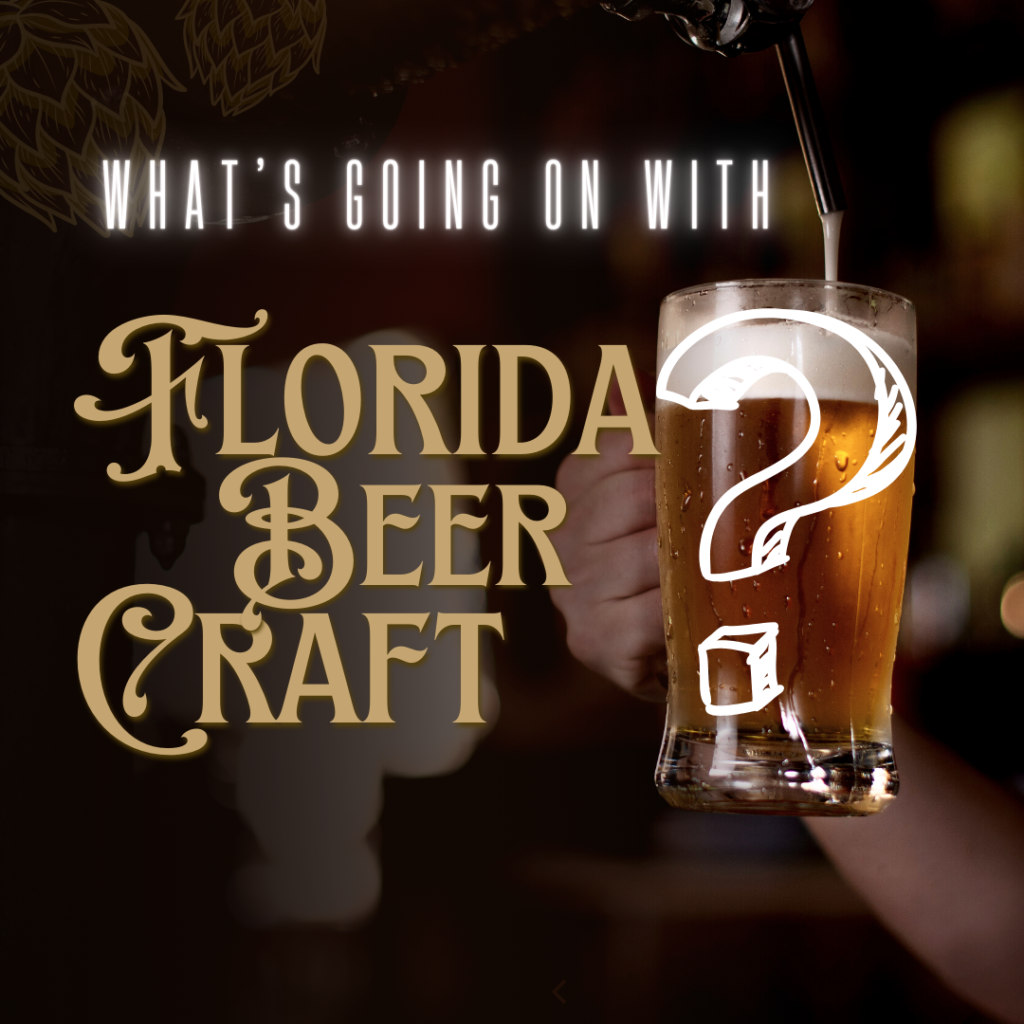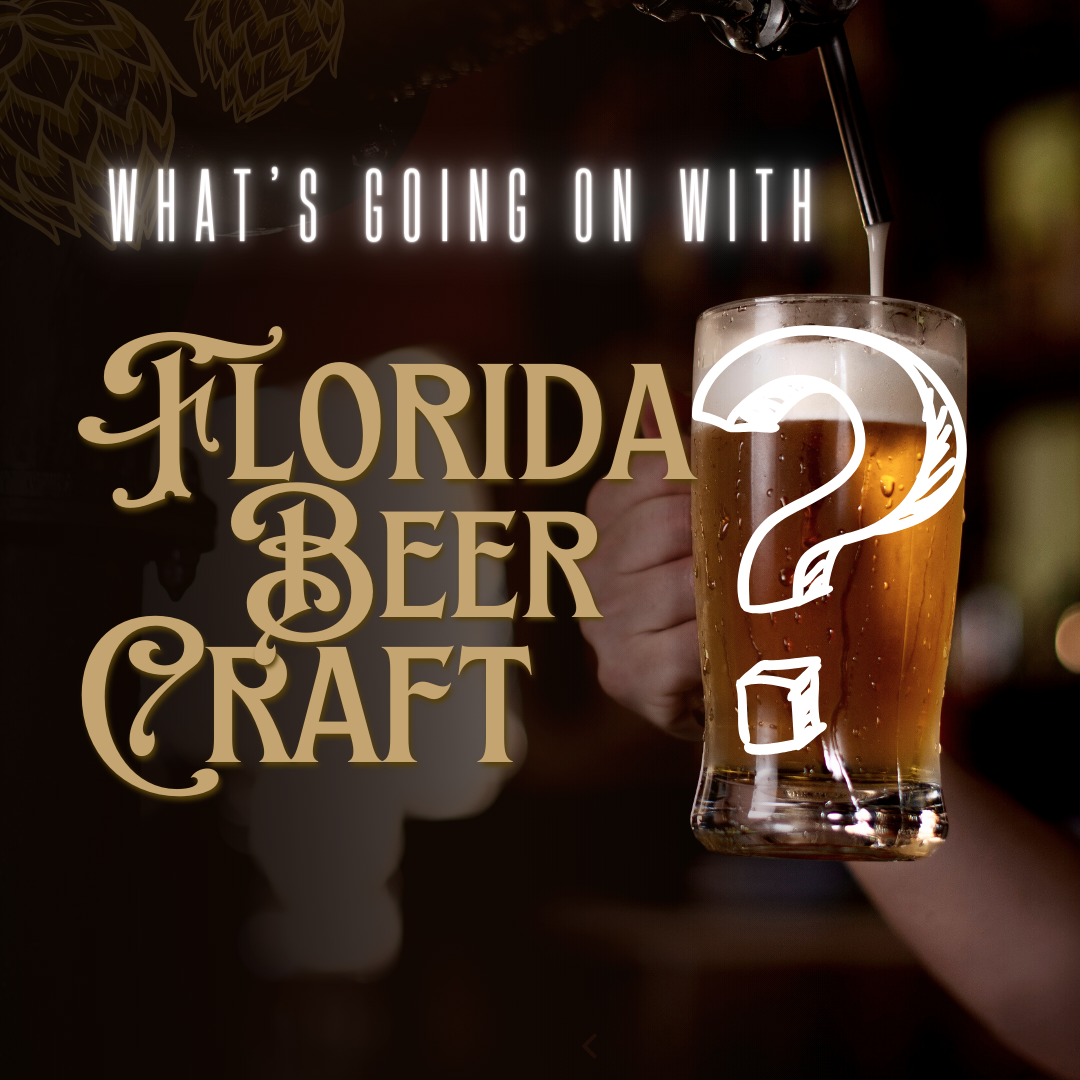Florida’s craft beer and breweries seem to be on a roller coaster currently.
It seems like a week cannot go by without news of a brewery opening or brewery closing.
Persimmon Hollow closed their Horizon West location in November. Pinglehead Brewing in Orange Park (Jacksonville Area) closed. Lemon Street Brewing of Jacksonville announced their closure. Tampa’s Zydeco Brew Werks announced their sudden closure. Beach Island Brewery of Dunedin closed, but Hook & Ladder Brewing is taking its place.
Altered Craft Distributing – the startup distributor who began to grow small brewers in the Tampa Market – abruptly announced they were going out of business.
In the same period we see openings and expansions – Cayo Hueso Brewing opened its doors on Stock Island (near Key West), Twelve Talons Beerworks opens its doors in Orlando’s Milk District, Trinity’s Escape Brewing is building a larger facility, Sarasota’s Calusa Brewing just moved into a larger facility, etc.
Is this right-sizing? Is the “Craft Beer Bubble Bursting”? What is going on in the market?
In short: A lot.
Florida’s issues are a microcosm of the larger craft beer community in the U.S. and abroad.
- The craft beer market has matured. While there is still a lot of consumer education to be done, the everyday drinking customer had drank his or her way around a brewery’s portfolio. There are not as many people who will drink many beers to get to know a brewery – enthusiasts are drinking less beer at more breweries in one outing. Now, this all means that:
- The consumer has changed. The typical craft beer drinker has gotten older and is encountering health problems that prevent drinking each night, and is therefore drinking less.
- Every aspect of life has been hit by inflation, right? That includes the breweries, too. All of the loans that many brewers took out when there were far fewer competitors are still there, but people are drinking less and if an interest rate was not locked in, it has surely gone up. So, breweries are expected to pay more with less revenue. Combine this with increased raw material costs, increas
 ed labor costs, and suddenly what was cake work a few years ago is a tempest of new issues to navigate.
ed labor costs, and suddenly what was cake work a few years ago is a tempest of new issues to navigate. - The idea of a craft brewery is changed. Gone are the days of wide open grocery store coolers bloated with macro lagers for craft brewers to take space from. Now is the era of seltzer and canned cocktails, combined with a new health conscience that has lead to exploration outside of beer. A brewery has to decide whether they will invest time, money, and resources behind these new trends or stay the course with traditional beer.
- There’s a new generation coming of drinking age, and they are a fickle bunch (in general). Dry January is a lifestyle now, Non-alcoholic beers are growing like no one, except maybe Heineken, could have predicted. Some have no desire to drink alcohol at all and do not waiver from that decision. Some only drink liquor, but the one commonality seems to be fickle drinking habits, if you could call them habits.
- The ripple effect of the pandemic is still being felt and it is only made worse by inflation. The Paycheck Protection Program allowed several struggling breweries to remain in business for a while longer. This allowed some breweries to put some duct tape on a hemorrhage, but an open wound still remained and has been eating away at the business if not tended to.
- A brewery needs more than good beer to survive. During the rise of craft beer in the 90s and before, there was some wiggle room for mistakes like financial missteps and sub-par batches of beer. No more. If a brewer puts one batch of bad beer into the market, statistically he or she must put 5 good beers into the same consumer’s hand for redemption. This feat is harder to accomplish with 10,000 competitors vying to get a glass of beer to that same consumer.
- Getting into distribution grows harder by the day. Big name distributors (the ones that sell Miller, Coors, and Budweiser) have less and less room on their trucks and less desire to expand offerings for small craft brewers. Even though craft beer is more profitable than macro lagers, craft brewers don’t sell the volume that the big breweries do. A distributor, like a brewer, is in business to make money. Distributing a brewery’s beer has to make sense for both brewer and distributor. If a distributor sells to 3,000 accounts, and has to build a following for a craft brewer from zero, the appeal is not like it was in the early 90’s. A distributor would rather lean on the brands that he or she knows will sell, rather than investing behind someone new to the market.
- It’s important to note that Florida is a bit lopsided here – in other states, a brewery can take on the impact of building their brand from nothing and then move to a distributor once the brewery has grown too large for self-distribution. This allows the brewery to show the distributor their brand’s value. Florida’s legislature continues to keep self-distribution for small breweries illegal, thus Florida breweries must sign with a distributor or only sell within the walls of their facility.
Where do we go from here?
So, is there any hope? Is there a way forward? Yes. Absolutely. But the same thing has been true in Florida since Red Cypress Brewing closed abruptly – the lesson is simple: thriving breweries are the ones supported by their communities. Since the ownership has to tend to the business and brewing side of the business, the biggest help a beer enthusiast can be boils down to four words: “Support Your Local Brewery.”
How does an average beer enthusiast help his or her local brewery?
First, drink the beer. (Responsibly and in moderation, of course.) It seems like a no-brainer, but this is how breweries make money. If you want to see the brewery survive, then don’t just assume they will always be there to serve you a fresh pint at your convenience. There’s no guarantee of that. One of the worst feelings is going back to a brewery or putting off drinking a certain beer for “Next Time,” then next time never comes. (RIP Falling Rock Tap House, Lost Abbey Tasting Room, Bagby Beer Company, 7venth Sun Tampa, etc.) Remember the lessons of Red Cypress Brewery.
Next, get behind your favorite brewer(s). It costs nothing to ‘like’ your favorite brewery on Facebook, Twitter X, Instagram, YouTube, TikTok, etc. Go a step further – pin them to your favorites so you always see their posts, then make a mental note to ‘like’ or ‘share’ every post. This helps extend the brewery’s reach and helps them speak to more people for no money.
Next, get behind your favorite brewer(s) politically, too. What issue is holding your local brewery back from making more money or entering new markets? In Florida, it’s self-distribution and distributor woes. New Jersey just got a bill passed to expand what brewers can do in their tasting rooms. Not too long ago, Georgia was restricted in how they could host customers in their tasting rooms. Grassroots support changed all of this. Find the state’s brewer’s guild and see what they’re saying is going on politically – their mission is to be the voice of the breweries.
Also, do you listen to podcasts or read blogs? Suggest your local brewery for coverage or a new beer release, event, or charitable connection with the brewery. One or two emails could lead to more coverage and exposure for your favorite brewer.
Do you plan events or parties for work a company or business? Check out what options the breweries have for hosting events and functions. Weddings, receptions, parties, meetings, etc can all be hosted at breweries, often for comparable prices and that money will go to a local business.
Finally, tell other people about the your favorite brewery. Spread the gospel and spread it loud. Don’t keep it to yourself. Bring your favorite beer to a party or get-together. Gift someone a six-pack. I always try to give my lawn guy, my bug guy, and repair people a beer or two to take with them. It may seem strange at first, but I rarely get turned down. There are still people who have never tried craft beer, and maybe they won’t on their own, but free beer is hard to turn down.
Beer is about community. It always has been. Craft breweries exist in communities and actively participate in their communities. Bringing people in from outside the community and letting them experience the great taste and the camaraderie is one thing that keeps people coming back to this great industry. And bringing people in to experience what you love about craft beer always helps the people who make the beer you love.


